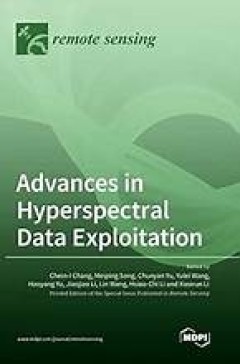Filter by

Advances in the Molecular Mechanisms of Abscisic Acid and Gibberellins Functi…
Gibberellins (GAs) and abscisic acid (ABA) are two phytohormones that antagonistically regulate plant growth, as well as several developmental processes from seed maturation and germination to flowering time, through hypocotyl elongation and root growth. In general, ABA and GAs inhibit and promote cell elongation and growth, respectively. Consequently, this mutual antagonism between GAs and ABA…
- Edition
- -
- ISBN/ISSN
- 9783036515397
- Collation
- oer.unej.ac.id
- Series Title
- -
- Call Number
- -

Advances in the Field of Electrical Machines and Drives
Electrical machines and drives dominate our everyday lives. This is due to their numerous applications in industry, power production, home appliances, and transportation systems such as electric and hybrid electric vehicles, ships, and aircrafts. Their development follows rapid advances in science, engineering, and technology. Researchers around the world are extensively investigating electrica…
- Edition
- -
- ISBN/ISSN
- 9783036542867
- Collation
- oer.unej.ac.id
- Series Title
- -
- Call Number
- -

Advances in the Processing and Application of Polymer and Its Composites
This book mainly focuses on the processing and applications of polymer and its composites. With the fast development of the petroleum industry, polymer materials have been widely utilized in our daily lives. The various processing methods of polymers determine the final properties and performance of products. In addition, the introduction of different fillers, including inorganic fillers, metal…
- Edition
- -
- ISBN/ISSN
- 9783036554136
- Collation
- oer.unej.ac.id
- Series Title
- -
- Call Number
- -

Abrasion Resistance of Materials
Abrasion is the primary type of wear in almost all fields of industry. It is particularly relevant to the longevity of pipelines and pumps and to almost all processing industries and applications where a constant interface exists with abrasive substances such as dust, sediments, or fluids with mineral particles. The performance of systems can be degraded depending on the properties of abrasive …
- Edition
- -
- ISBN/ISSN
- 9789535103004
- Collation
- oer.unej.ac.id
- Series Title
- -
- Call Number
- -

Advances in Hyperspectral Data Exploitation
Using hyperspectral imaging (HSI) to exploit data has been found in a wide variety of applications. This reprint book only presents a small glimpse of it. Many other important applications using HSI which have emerged in data exploitation are not covered in this reprint book. For example, such applications may include water pollution and toxic waste in environmental monitoring, pesticide residu…
- Edition
- -
- ISBN/ISSN
- 9783036557953
- Collation
- oer.unej.ac.id
- Series Title
- -
- Call Number
- -

10th Anniversary of Applied Sciences-Invited Papers in Chemistry Section
This book consists of 12 original research articles and one comprehensive review from invited chemists from around the world covering different fields of chemistry. The article on analytical chemistry features the analysis of highly polar metabolites in biological fluids, the determination of non-steroidal anti-inflammatory drugs with a gas chromatography coupled to ion trap mass spectrometry, …
- Edition
- -
- ISBN/ISSN
- 9783036511146, 9783036511153
- Collation
- -
- Series Title
- -
- Call Number
- -

10th Anniversary of Actuators
This is a reprint of the articles from the Special Issue entitled "10th Anniversary of Actuators", published in the open-access journal, Actuators. It consists of 18 representative works with four main topics: systematic reviews for specific types of actuators, performance evaluation, design and controls, and new actuators' applications. This reprint helps readers to understand the challenges a…
- Edition
- -
- ISBN/ISSN
- 9783036579016, 9783036579009
- Collation
- -
- Series Title
- -
- Call Number
- -

100% Renewable Energy Transition: Pathways and Implementation
Energy markets are already undergoing considerable transitions to accommodate new (renewable) energy forms, new (decentral) energy players, and new system requirements, e.g. flexibility and resilience. Traditional energy markets for fossil fuels are therefore under pressure, while not-yet-mature (renewable) energy markets are emerging. As a consequence, investments in large-scale and capital in…
- Edition
- -
- ISBN/ISSN
- 9783039280353, 9783039280346
- Collation
- -
- Series Title
- -
- Call Number
- -

A Comprehensive Survey of International Soybean Research : Genetics, Physiolo…
Soybean is the most important oilseed and livestock feed crop in the world. These dual uses are attributed to the crop's high protein content (nearly 40% of seed weight) and oil content (approximately 20%); characteristics that are not rivaled by any other agronomic crop. Across the 10-year period from 2001 to 2010, world soybean production increased from 168 to 258 million metric tons (54% inc…
- Edition
- -
- ISBN/ISSN
- 978-953-51-4259-1
- Collation
- 626 hlm
- Series Title
- -
- Call Number
- -

A Comprehensive Review of the Versatile Dehydration Processes
This book provides a comprehensive overview of dehydration techniques. It includes six chapters that discuss various methods of food dehydration. Some of these processes include advanced drying methods that utilize microwaves, infrared radiation, and radio frequency, as well as techniques like hot air, vacuum, fluidized bed, and freeze-drying. Chapters explore the advantages and disadvantages o…
- Edition
- -
- ISBN/ISSN
- 978-1-83768-142-6
- Collation
- 110 hlm
- Series Title
- -
- Call Number
- -
 Computer Science, Information & General Works
Computer Science, Information & General Works  Philosophy & Psychology
Philosophy & Psychology  Religion
Religion  Social Sciences
Social Sciences  Language
Language  Pure Science
Pure Science  Applied Sciences
Applied Sciences  Art & Recreation
Art & Recreation  Literature
Literature  History & Geography
History & Geography